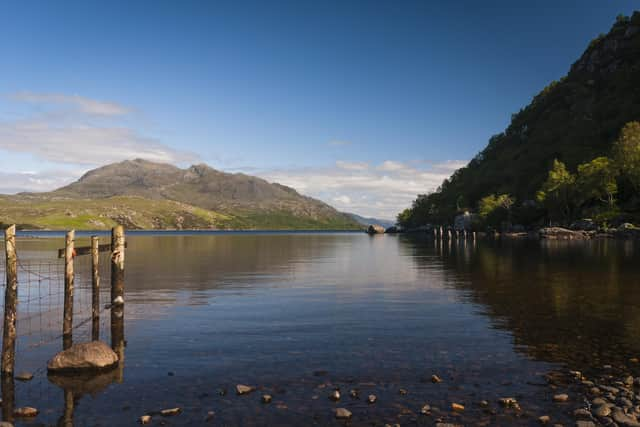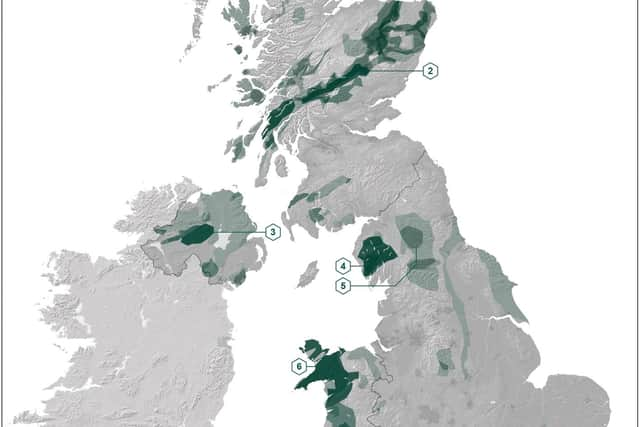Map reveals Scottish and UK mining hotspots for crucial green tech minerals – including Loch Maree in the north-west Highlands
In a report produced by the British Geological Survey (BGS) for the Critical Minerals Intelligence Centre (CMIC), scientists have earmarked areas of the UK which are likely to hold rich deposits of several critical raw materials (CRMs), including cobalt, lithium and graphite.
A map has been created which earmarks the places where rock formations are likely to contain 18 metals and minerals which are economically important and at the greatest risk of shortages due to reliance on imports from abroad.
Advertisement
Hide AdAdvertisement
Hide AdThe BGS team used soil and sediment geochemistry data and knowledge of the geological processes required to produce certain minerals to pinpoint the potential mining sites.
Those “particularly worthy” of more exploration include an area around Loch Maree, near Gairloch, and a stretch around the Highland Boundary Fault line, which runs from Arran and Helensburgh on the west coast to Stonehaven in the east.
Other areas in Northern Ireland, England and Wales have also been plotted.
The publication represents one of the first steps in the UK government’s new Critical Minerals Strategy, which aims to make the nation more resilient to disruption in international supply chains by accelerating the growth of domestic capability.
The report’s authors have stressed that areas identified as potential sources of the minerals will not necessarily be targeted for exploration and mining.


Eimear Deady, mineral resource geologist at BGS, said: “Our report identifies the parts of the UK where the geological criteria have been met and therefore have the potential for deposits to occur. There are no guarantees.
“The report focuses on the geological evidence and does not consider potential constraints on development, for example where there are areas of outstanding beauty, villages and towns or other environmental considerations.
“Much more research is required, and if prospectors find evidence of commercially viable CRM deposits they will have to go through the well-established planning process. Only one in a 1000 potential mineral exploration projects ever becomes an operating mine.”
Advertisement
Hide AdAdvertisement
Hide AdPoliticians and renewables industry leaders are pushing for more manufacturing of clean technology to take place in Scotland as the country moves away from oil and gas and towards a net zero society by 2045.


Scottish Greens MSP Mark Ruskell has welcomed the new study but stressed the importance of fully utilising materials already in circulation.
He also warned that care must be taken if mining is to go ahead.
“This is interesting research, although, as the BGS acknowledges, there is a lot more to be done in terms of the specifics,” he said.
“In any case, the priority has to be building our circular economy and ensuring that we are getting the full life and use out of the precious metals and minerals that we already have and that are so important to so many green technologies.
“If we are to mine for more of these materials then it must always be done in a responsible way that is sensitive to local communities and environments and does not damage or impose on them in the process.”
Comments
Want to join the conversation? Please or to comment on this article.